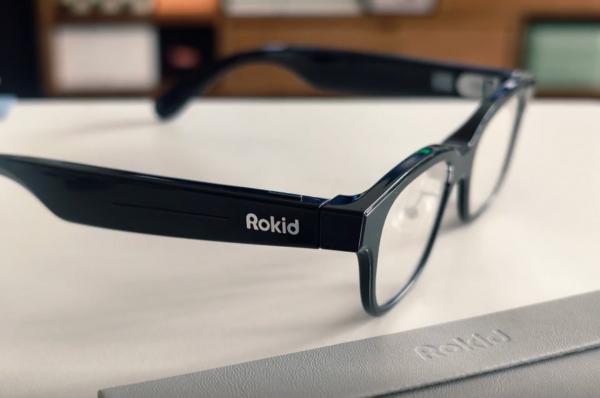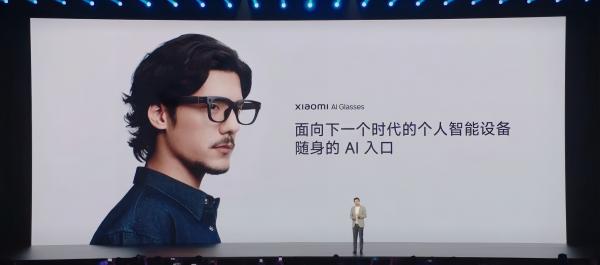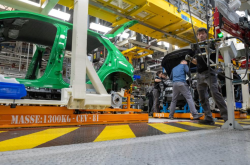AI Smart Glasses: The Dawn of a New Era!
![]() 08/21 2025
08/21 2025
![]() 613
613
The rapid evolution of large generative AI models has ignited fresh narratives for smart glasses.
In a recent quarterly earnings call, Zuckerberg remarked, "I firmly believe that glasses will embody the ideal form of AI, allowing it to see, hear, and interact with you as you do." He even suggested that those without AI glasses might face cognitive disadvantages.

Apple echoes this sentiment, viewing smart glasses as the pinnacle of AI integration. Rumors abound that Apple's glasses will transmit visual data to AI assistants via cameras, enabling functionalities akin to iPhone's visual intelligence, offering real-time responses tailored to the wearer's sight.
Apple's investments in this realm have surged over the past year, further underscoring the technology's competitive edge.
Song Gang, head of Alibaba's Intelligent Information Business Group, also emphasized that AI glasses, as the next-generation "sensory hub" for human-computer interaction, will significantly increase personal data volume and are poised to become the most vital personal mobile device after smartphones. He believes that glasses occupy a prime position on the human head, capturing over 80% of sensory input, and offer versatile usage scenarios spanning office, lifestyle, and mobility.
A myriad of AI products, from search Q&A, smart assistants, writing tools, to image and video generation, are emerging incessantly. However, these products remain tethered to mobile phones and computers, limiting their ability to transcend fixed scenarios or ecosystems, making them somewhat distant from the ideal of ubiquitous AI services.
AI smart glasses present a beacon of hope.
Tech giants like Apple, Meta, Alibaba, Huawei, and Xiaomi have embraced this trend, positioning smart glasses as the ultimate carriers of "personal AI assistants." Securities analysts concur, suggesting that smart glasses have the potential to supplant mobile phones in scenarios like sports and commuting.
Market data underscores this growth trajectory. According to Tianyancha Professional Edition, there are currently over 400 active enterprises related to smart glasses in China. IDC data reveals that global smart glasses shipments reached 1.487 million units in Q1 2025, a year-on-year increase of 82.3%. Meanwhile, China's smart glasses market saw shipments of 494,000 units, a 116.1% year-on-year jump.
While the market generally favors the narrative of AI smart glasses, dissenting voices persist.
| AR Glasses: A Prelude to AI Glasses? |
In July 2025, Xu Chi, founder of XREAL, echoed this sentiment on social media, stating, "Let's be clear: XREAL will prioritize refining our AR glasses experience rather than rushing into AI glasses in 2025." Xu Chi believes that the industry has a clear vision of the end goal but lacks consensus on the path to achieve it. He contends that the AI glasses industry is still in its nascent stages, with an overemphasis on capital market buzz around the "AI glasses" concept.
Xu Chi advocates focusing funds and energy on refining core modules before steering the industry in the right direction.
Mingming Zhu, founder of Rokid, shares a similar perspective, asserting that "AI is undoubtedly the future, but let's not overload it with responsibilities prematurely." Rokid emphasizes "simplification" in its path selection.
For instance, Rokid Glasses' translation function, powered by Alibaba's Tongyi large model, boasts 98% accuracy in multi-language translation and supports over 20 scenarios, including speeches and live broadcasts. Zhu Mingming himself donned Rokid Glasses to deliver a public speech.

Xu Chi, dedicated to smart glasses' core module development, unveiled Xreal's self-developed coprocessor chip X1 last year and introduced the "X Prism" optical solution in the latest XREAL One Pro.
Xu Chi's strategy aims to secure an early supply chain advantage, reasoning that if core products become readily available, it signifies industry maturity, attracting more competitors and making it harder for XREAL to stand out. Therefore, XREAL is developing chips and solving optical challenges to solidify its hardware technology position.
This highlights the challenges faced by smaller vendors like Rokid, XREAL, and Lei Bird, who struggle to compete with giants like Huawei and Alibaba in AI large models, cloud storage, funds, and talent.
Initially, giants and small vendors forged cooperative models. Rokid Glasses' translation function leverages Alibaba's Tongyi large model, while Alibaba's Kuake AI glasses collaborate with TCL Lei Bird Innovation for C2M customization, reducing return rates by 40% compared to industry averages. Lei Bird's partnership with Alibaba's Tongyi Qianwen AI large model slashes average response time to 1.3 seconds, establishing barriers in vertical fields like medical consultation and foreign language teaching.
Small vendors' survival may hinge on leveraging technological accumulation and partnering with giants, even as suppliers.
Smart glasses hardware generates revenue and can expand profit models through content subscriptions and value-added services, offering an intuitive, immersive, and convenient user experience.
However, smart glasses' hardware technology is still nascent, leaving ample room for improvement.
| Consumer Hesitation Over Inadequate Experience |
Currently, smart glasses can be broadly categorized into five types: audio-only glasses, audio-camera glasses, AI+AR glasses with display functionality, split AR glasses requiring wired connections, and VR glasses, hindered by high costs and poor experiences.
Lightweight glasses dominate the market, comprising 99% of the second type. However, users are dissatisfied with AI functionalities, citing discomfort, short battery life, and clunky AI interactions. They primarily use them for music and photography.
Last weekend, Yidu Pro experienced Rokid's products at Beijing Super Heshenghui. The display was dim, controls were unresponsive, akin to stuffing a projector into glasses. Prolonged wear caused discomfort, inferior to TVs or projectors.

Smart glasses necessitate mobile phones, rings, or portable terminals. Rokid's Sration2 terminal, combining mouse and power bank functions, is cumbersome to operate.
Connecting other smart glasses to mobile phones requires frequent phone unlocking, inconveniencing audio switching or material exports.
Most smart glasses use Qualcomm's AR1 chip, based on mobile phone or watch architecture, inevitably leading to issues. This reflects smart glasses as a deformed product agglomeration.
Industry insiders note a significant gap between smart glasses' and mobile phones' interactive functions, estimating at least 5-10 years of development and accumulation before they become mainstream.
For practical, reliable smart glasses, continuous enhancements in battery life, face recognition, and memory processing are crucial for all-day intelligent assistance. Interaction methods must become more natural, evolving from voice and gesture to low-friction inputs like wristband sEMG and brain-computer interfaces.
Addressing these issues necessitates dedicated operating systems, customized chips, and optical accessories.
A smart glasses brand faced regulatory scrutiny over "eavesdropping risks" due to a lack of indicator lights, highlighting the need for privacy protection and electromagnetic radiation safety indicators to regulate industry growth.
Currently, smart glasses face numerous challenges, primarily market acceptance hindered by shortcomings and high prices. Giants must play a pivotal role.
| Giants' Entry is Crucial for Market Growth |
Giants' entry benefits the industry, raising public awareness and driving AI glasses from niche to mass market.
Take Xiaomi's smart glasses as an example.
Approved by founder Lei Jun in June 2024, Xiaomi's AI glasses project gained momentum. Within a year, Xiaomi unveiled its first AI glasses at the Xiaomi Human-Vehicle-Home Ecosystem Launch Event.

Li Chuangqi, head of Xiaomi's AI glasses project, revealed selecting the most expensive components to ensure project success.
Despite shortcomings, Xiaomi's AI glasses, priced at 1999 yuan, allow more people to experience them, planting seeds and educating the market.
Li Chuangqi hopes to leverage Xiaomi's platform to propel the smart glasses industry chain forward within three years, potentially achieving annual shipments exceeding five million. With over 700 million myopic people in China, smart glasses shipments could surpass 50 million.
Giants possess sufficient funds, resources, and the ability to concentrate forces. More importantly, their business ecosystems can achieve synergy, enhancing user experience.
Song Gang envisions leveraging Alibaba's R&D investment, high-end hardware expertise, and Kuake's multi-modal and vertical AI capabilities, based on the Tongyi Qianwen large model, to create practical, user-friendly AI glasses.
For instance, partnering with Gaode Maps enables navigation in cycling and walking scenarios; Alipay integration allows direct code scanning for payment; Taobao collaboration offers product search and price comparison; and Flying Pigs partnership adds business travel itinerary reminders.
Giants' entry can swiftly integrate the smart glasses industry supply chain, fostering software and hardware complementarity with small vendors, accelerating industry updates and iterations, and competing for international leadership.
| Conclusion |
Regarding when AI glasses will truly take off, Xu Chi predicts around 2027-2028. He stated, "If Lei Jun personally commits and devotes significant time to glasses, it will mark the industry's true 'battle of a hundred lenses.'"
Zhao Zhongxia, a researcher at the Beijing Academy of Artificial Intelligence and visiting scholar at Peking University, believes companies with large models, AI application entry points, and hardware ecosystems will gain early advantages. Currently, only giants like Huawei, Alibaba, and Xiaomi meet these criteria, positioning the AI glasses industry for new giants' emergence.
XREAL's newly released XREAL One Pro, equipped with its self-developed X Prism optical engine and X1 spatial computing chip, reportedly collaborates deeply with Google. Beyond domestic giants, foreign technology leaders also present viable partnerships.

Currently, smart glasses manufacturers' layouts are strategic, reserving forces to establish market footholds. The industry eagerly anticipates the 'battle of a hundred lenses,' driving supply chain maturity, product experience enhancement, and market education.
Images are sourced from official channels. Kindly delete if infringement is identified.






